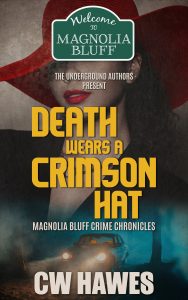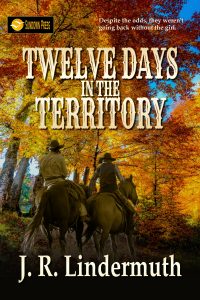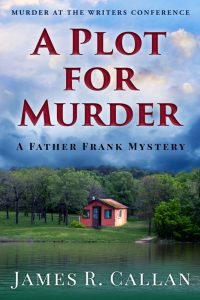Last year I joined a group of authors devoted to improving and promoting fellow authors. This group, with authors from the U.S., Canada, and Mexico, and lots of Zoom meetings, decided to publish an anthology of short stories. But, we decided that they should be connected in some way. Eventually, it was determined that we would select a picture and all stories in the anthology would relate to that picture in some way, and that picture would become the cover for the book. At this point, we determined that we needed a name for our group and after some discussions, we settled on The Underground Authors. So 2021 saw the publication of Beyond the Sea, Stories from the Underground nderground. https://www.amazon.com/Beyond-Sea-Underground-Charles-Breakfield-ebook/dp/B093DRG1ZK/
With the success of our short story anthology, it was proposed that for 2022, The Underground Authors try a more difficult type of anthology. Each author would write their own book, but they would be tired together in some way. After several Zoom meetings, we decided to create a fictitious town in Texas and all novels would be set in this town. We would publish one book a month starting in April, 2022.
Each author would forward bios for major characters, and promise to promptly notify all should a character get killed, so other novels would not use them – at least without explaining why that character was back on earth.
Likewise, a developing map of the town was drawn that would show where important places were located, with names and any important facts about the place. Thus, in my book (which will be the fourth in the series), I have characters I can use, stores and restaurants they can visit, and then I add in my specific characters and places to flesh out my particular novel. The town became Magnolia Bluff, set in the Texas Hill Country.
The Underground authors include CW Hawes, Caleb Pirtle, Cindy Davis, Linda Pirtle, Grace Marshall, Richard Schwindt, Charles Breakfield, Roxanne Burkey, Jinx Schwartz and myself.
I’m sure some of these names will be familiar to you as they are award-winning authors. The first in the series was CW Hawes’s Death Wears a Crimson Hat. It was published in April. Caleb Pirtle’s novel, Eulogy in Black and White will be released on May 20. Here’s my review of the CW Hawes entry in the Magnolia Bluff Mystery Chronicles.
Harry Thurgood and Ember Cole, independently, have come to the small Texas Hill Country town of Magnolia Bluff to get away from their past. And while they like each other, they are kept apart by the secrets from their past lives. Yet this delightful little town has its own secrets. One powerful woman is capable of imposing her will on others, and often her will is to harm someone not in her inner circle. But someone objects to this and that leads to a person being killed and another almost dying.
Ember, now the Reverend Ember Cole, is accused of murder. Forgetting their own hidden history, Harry and Ember must work together to keep Ember from being arrested for the murder. The problem is, as they begin to make headway on finding the murderer, they become the new targets for the killer.
Author CW Hawes has drawn several interesting characters with such careful work that you begin to believe they are your long-time friends. You are drawn not only into the charming town but also into the lives of these characters. If you like a good mystery and great characters, grab a copy of Death Wears a Crimson Hat. You won’t be disappointed. To order on Amazon, just click here — https://www.amazon.com/Death-Wears-Crimson-Hat-Chronicles-ebook/dp/B09XGSSKCW/ref=sr_1_1?crid=ZI9QDPRZPRZ8&keywords=Death+wears+a+crimson+hat&qid=1652288348&s=books&sprefix=death+wears+a+crimson+hat%2Cstripbooks%2C92&sr=1-1
a good mystery and great characters, grab a copy of Death Wears a Crimson Hat. You won’t be disappointed. To order on Amazon, just click here — https://www.amazon.com/Death-Wears-Crimson-Hat-Chronicles-ebook/dp/B09XGSSKCW/ref=sr_1_1?crid=ZI9QDPRZPRZ8&keywords=Death+wears+a+crimson+hat&qid=1652288348&s=books&sprefix=death+wears+a+crimson+hat%2Cstripbooks%2C92&sr=1-1

 use built by a man who rode with Buffalo Bill Cody. A retired newspaper editor, he is now librarian of his county historical society where he assists patrons with genealogy and research. He has published 19 novels and two non-fiction regional histories. He is a member of International Thriller Writers and a past vice president of the Short Mystery Fiction Society.
use built by a man who rode with Buffalo Bill Cody. A retired newspaper editor, he is now librarian of his county historical society where he assists patrons with genealogy and research. He has published 19 novels and two non-fiction regional histories. He is a member of International Thriller Writers and a past vice president of the Short Mystery Fiction Society.
 tragic-comic bubble and squeak.” —William Harrison Ainsworth, New Monthly Magazine, review of Moby Dick by Herman Melville (1851)
tragic-comic bubble and squeak.” —William Harrison Ainsworth, New Monthly Magazine, review of Moby Dick by Herman Melville (1851) main speaker at a writers conference. But after the opening session and in front of a crowd, Maggie DeLuca, Father Frank’s sister, accuses Granet of stealing her story and says he will pay.
main speaker at a writers conference. But after the opening session and in front of a crowd, Maggie DeLuca, Father Frank’s sister, accuses Granet of stealing her story and says he will pay.